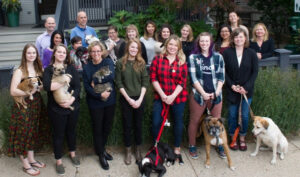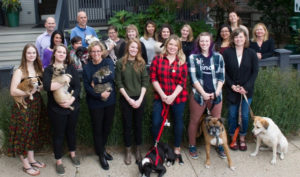Video of a Dental Cleaning and Oral Health Assessment Performed at AMC in Chicago
How to Brush Your Teeth
Most people are advised by their dentist to brush their teeth after eating and see a dentist for a professional dental cleaning every 6 months. In reality, most people brush their teeth once or twice daily. Owners of pets are advised by their veterinarians to brush their pet’s teeth once daily. Unfortunately, most people do not brush their pet’s teeth. In many cases, a pet may have his or her teeth addressed professionally only once in a lifetime.
In order to fully evaluate the oral cavity of our patients, it is imperative that each pet be anesthetized. It is inhumane (painful and stressful) and drastically inferior medical care to evaluate the oral cavity of a pet without sedation. It is estimated that over 60% of dental pathology lies beneath the gum surface. To simply remove the plaque or tarter from a tooth is just a cosmetic procedure, and does not address or resolve your pet’s true dental problems and pain.
At AMC, prior to the Dental Procedure, each pet is examined by a certified veterinary technician. Pre-anesthetic blood work is drawn and evaluated to assess your pet’s overall health. An IV catheter is placed and fluids are run to help keep your pet well hydrated during the procedure. Pain medication and sedative are given prior to placing your pet on gas anesthesia with a ventilator.
Your pet’s teeth are cleaned thoroughly with an ultrasonic scaler by a Certified Veterinary Technician. Then, each tooth in your pet’s mouth is probed and charted by your Veterinarian. Any suspicious or problematic tooth is radiographed to further expose or clarify the disease process.
If the tooth needs further medical attention, the client is contacted. The veterinarian will discuss with the client the recommended treatment plan for their pet, and a plan of action will be chosen.
If a tooth needs oral surgery, a nerve block is performed to anesthetize the tooth and allow for extended pain relief following the oral surgery. Tooth extraction involves the creation of a gingival flap to expose the roots of the tooth. With a dental bur, the tooth roots are individually separated and then extracted. After the crown and roots are surgically removed, the gingival flap is closed with dissolvable suture material.
All pets undergoing oral surgery will go home on antibiotics and pain medication in order to make post-operative period as pain-free and smooth as possible. Comprehensive discharge instructions are sent home with each patient and include a soft diet recommendation for 1-2 weeks as well as oral cleaning instructions to insure a rapid recovery. All oral surgery patients receive a complimentary recheck examination by the veterinarian in 10-14 days.
Following every dental procedure, a veterinarian or veterinary technician will make recommendations on how to maintain your pet’s oral healthcare. We strongly recommend brushing teeth once daily with a pet approved tooth paste. If that is not possible, we will discuss with you oral rinses, dental chew treats and other products to decrease future plaque and tarter buildup in your pet’s mouth.
At AMC, we recommend at least once yearly physical examinations for adult patients under 10 years of age. For pets older than 10 years of age we recommend twice yearly physical examinations. One very important reason for these examinations is to have your pet’s oral health evaluated. Just as is the case with human dental care, it is wise to be proactive with your pet’s oral health, rather than to wait for a crisis which leaves your pet painful and is much more costly for you to correct.
Dental disease is painful and potentially can aggravate heart, kidney, liver and gastrointestional tract disease. Please contact us at 773.525.3353 for questions regarding your pet’s oral health care or to schedule an Oral Health Care Examination.


